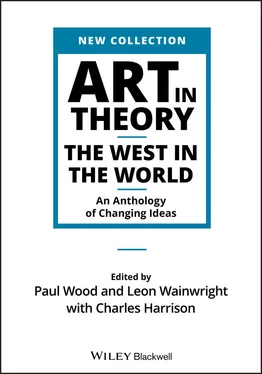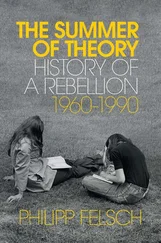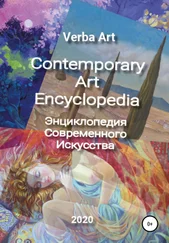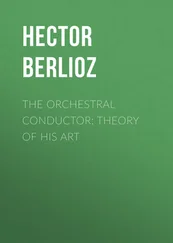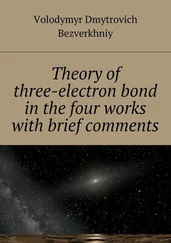But though there are several of these wild scenes, that are more delightful than any artificial shows; yet we find the works of Nature still more pleasant, the more they resemble those of Art: For in this case our Pleasure rises from a double principle; from the agreeableness of the objects to the eye, and from their similitude to other objects. […]
[T]here is generally in Nature something more grand and august, than what we meet with in the curiosities of Art. When, therefore, we see this imitated in any measure, it gives us a nobler and more exalted kind of pleasure, than what we receive from the nicer and more accurate productions of Art. On this account our English gardens are not so entertaining to the Fancy as those of France and Italy, where we see a large extent of ground covered over with an agreeable mixture of garden and forest, which represent every where an artificial rudeness, much more charming than that neatness and elegancy which we meet with in those of our own country. […]
Writers, who have given us an account of China, tell us the inhabitants of that country laugh at the plantations of our Europeans, which are laid out by the rule and line; because, they say, any one may place trees in equal rows and uniform figures. They choose rather to shew a genius in works of this nature, and therefore always conceal the Art by which they direct themselves. They have a word, it seems, in their language, by which they express the particular beauty of a plantation that thus strikes the Imagination at first sight, without discovering what it is that has so agreeable an effect. 1Our British gardeners, on the contrary, instead of humouring Nature, love to deviate from it as much as possible. Our trees rise in cones, globes, and pyramids. We see the marks of the scissars upon every plant and bush. I do not know whether I am singular in my opinion, but for my own part, I would rather look upon a tree in all its luxuriancy and diffusion of boughs and branches, than when it is thus cut and trimmed into a mathematical figure; and cannot but fancy that an orchard in flower looks infinitely more delightful, than all the little labyrinths of the most finished parterre.
IIA6 John Shebbeare (1709–88) ‘The taste of England at present …’
John Shebbeare was an eighteenth‐century political writer. His Tory sympathies led him to publish a series of satires against the Whigs and the Hanoverian dynasty with whom they were associated. His Letters on the English Nation used the device of a series of letters by a fictional author to criticize contemporary social mores, much as Montesquieu had done in the Persian Letters . Shebbeare’s fictional author was ‘Batista Angeloni’, a Jesuit with long experience of English life. The fifty‐sixth of his 59 ‘Letters’ concerned ‘The taste of England at present in architecture’. It is in essence a critique of the all‐pervading fashion for things Chinese. Chinoiserie was often identified with ‘effeminacy’ in taste, and something of this leaks through into Shebbeare’s defence of the ‘simple and sublime’, that is to say, the classical achievements of the seventeenth century. Paradoxically, for him the affectations of the ‘Grand Tour’ seem to have weakened a true appreciation of the classical, and opened the door to the caprice of Chinoiserie and the Gothic. The extracts are from Letters on the English Nation , vol. 2, London, 1756, ‘Letter LVI’, pp. 259–64.
How few of those men of taste who have travelled Italy, have ever studied the human body; it is cloathed and concealed, and almost impossible in the common ways of life to be seen frequently and with attention; notwithstanding this, in every painting and piece of sculpture, they set themselves forth as just judges of every human figure, which can never be obtained but from the thorough consideration of many living bodies.
But to waive all examination of the power of judging of those things which are known by comparison, and where the originals are concealed from proper inspection, let us see how much these travellers have improved the taste of this nation, by their perigrinations: in architecture, Inigo Jones, and Sir Christopher Wren have been excellent, the first equal perhaps to any man amongst the whole list of these artists; and perhaps at that time the four greatest men in the world in point of genius were natives of and resided in this island, Verulam, Shakespeare, Hervey, and Jones … It was then, genius seems to have been most prevalent in this isle, from which time it has declined, and that taste which was its companion, is lost entirely. […]
The simple and sublime have lost all influence almost every where, all is Chinese or Gothic; every chair in an apartment, the frames of glasses, and tables, must be Chinese: the walls covered with Chinese paper filled with figures which resemble nothing of God’s creation, and which a prudent nation would prohibit for the sake of pregnant women.
In one chamber, all the pagods and distorted animals of the east are piled up, and called the beautiful decorations of a chimney‐piece; on the sides of the room, lions made of porcelain, grinning and misshapen, are placed on brackets of the Chinese taste, in arbors of flowers made in the same ware, and leaves of brass painted green, lying like lovers in shades of old Arcadia.
Nay, so excessive is the love of Chinese architecture become, that at present the fox‐hunters would be sorry to break a leg in pursuing their sport over a gate that was not made in the eastern taste of little bits of wood standing in all directions; the connoisseurs of the table delicacies can distinguish between the taste of an ox, which eats his hay from a Chinese crib, a hog that is inclosed in a stye of that kind, or a fowl fattened in a coop the fabric of which is in that design, and find great difference in the flavour. […]
To my unpolite ears, the airs which are sung at present have no longer the imitation of any thing which would express passion or sentiment, and the whole merit lyes in the Gothic and Chinese closes and cantabiles, frithered into niceties and divisions, which, like minute carvings, are the certain characteristics of a little taste, that delight more in difficulties than truth … The Chinese taste is so very prevalent in this city at present, that even pantomime has obliged harlequin to seek shelter in an entertainment, where the scenes and characters are all in the taste of that nation.
IIA7 Oliver Goldsmith ( c. 1728–74) from The Citizen of the World
Born into an Irish Protestant family, Oliver Goldsmith went on to become a key participant in literary London life in the late eighteenth century, being invited by no less a figure than Samuel Johnson to participate in ‘The Club’, the coterie of artists and writers around Johnson himself which included Reynolds, Burke, Boswell and later Garrick and Gibbon. His course, however, was anything but smooth. Having failed to establish himself in a conventional career, he went off on a sort of pastiche Grand Tour, where he supported himself by busking and giving occasional English lessons. Having arrived in London in 1756, he considered India, but failed in that enterprise as well. What he could do was write, ending up as a Grub Street hack while trying to establish a literary reputation. A popular genre at the time, largely French in origin, was that of letters home written by an imaginary foreigner, the primary example being Montesquieu’s Persian Letters (cf. IIA4). Over a hundred of Goldsmith’s ‘Chinese Letters’ satirizing various aspects of English life and culture were published in instalments in the Public Ledger between January 1760 and August 1761. Their success led to them being republished in book form as The Citizen of the World in May 1762. In Letter XIV, Goldsmith doubles the satire by turning to the fashion for chinoiserie itself: poking fun at the cognoscenti who know – or think they know – more about China than a ‘real’ Chinese. His protagonist, Lien Chi Altangi, is writing to his friend Fum Hoam, ‘First President of the Ceremonial Academy of Pekin’. The extracts are taken from The Miscellaneous Works of Oliver Goldsmith M. B ., vol. 2, edited by James Prior, London: John Murray, 1837, pp. 51–4.
Читать дальше
